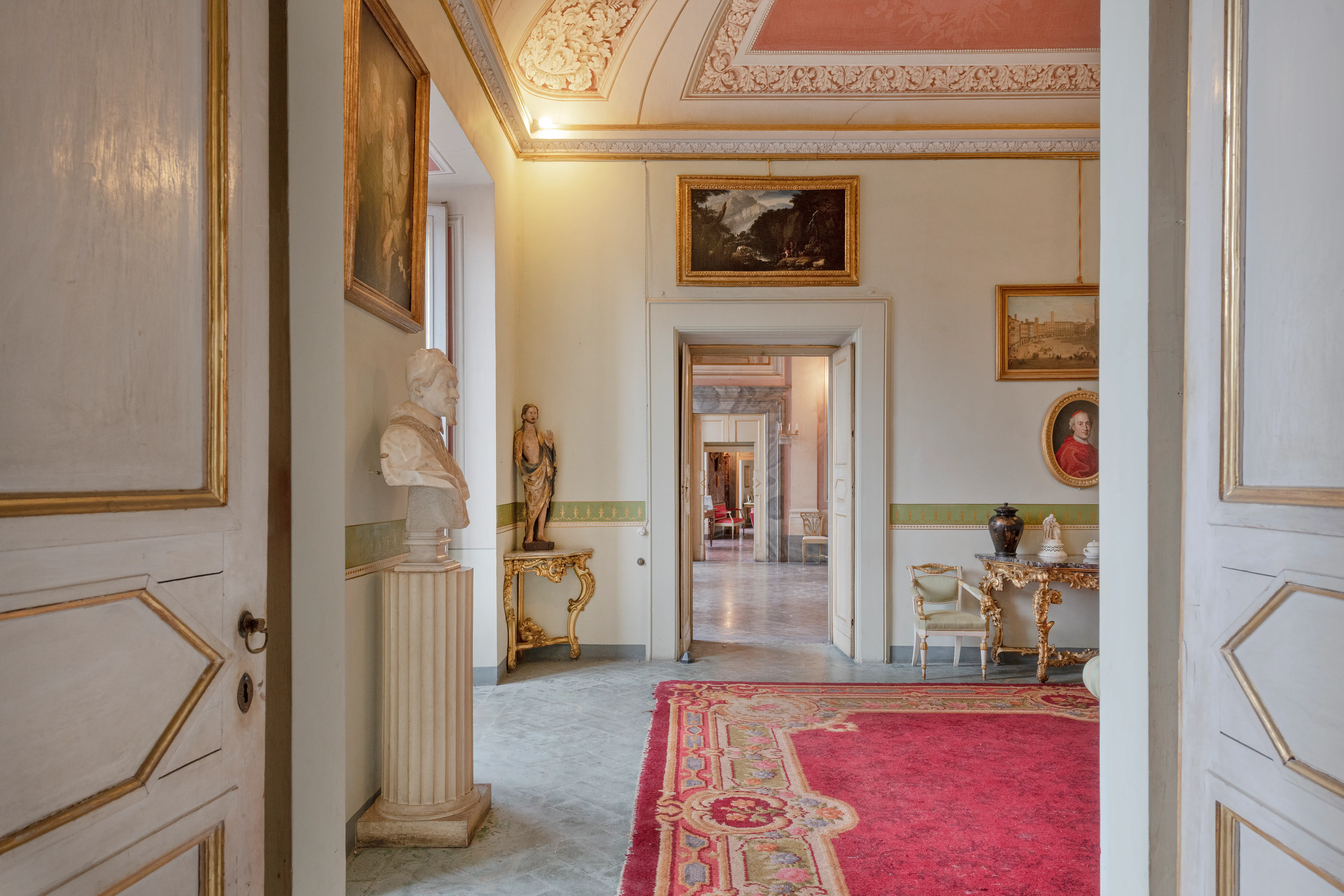History

in the heart of the city
Between the permanent collection and the architectural heritage
One of the largest buildings in the city, its uniqueness lies in its regular-plan inner courtyard, which is accessed by two majestic entrances, one on Banchi di Sotto and the other on Chiasso Largo. The construction of the Palazzo differs significantly from all the others facing the city's largest square, as it does not conform to the 14th-century Gothic style; in fact, it is characterised by a simple structure and facades in late Roman Baroque style, and by the large balcony on the main floor. You can admire the rooms on the main floor frescoed by Marco Benefial, Placido Costanzi and Giuseppe Colignon. There are also tempera paintings on canvas, depicting architectural views, in the taste of the Bibbiena family and Giovanni Battista Marchetti known as il Pianpianino. The palace also houses the extremely rich Chigi Zondadari collection. Palazzo Chigi-Zondadari, originally Palazzo Mezzolombardi-Rinaldini (Maconi), one of the city's largest, most emblematic and representative palaces, overlooks Piazza del Campo, at the corner of Via Rinaldini (the Chiasso Largo) and the Piazza itself.

A late baroque gem
in Piazza del Campo
%C2%A9photoElaBialkowskaOKNOstudio.webp)
The construction of the palace involved no small number of challenges, as its mass was not to disrupt the character of the surrounding buildings (it is worth remembering that all the 14th-century structures facing Piazza del Campo like theatrical backdrops followed a specific layout established in 1297). The architect had to respect the constraints imposed by the other buildings on the square. The result is a palace that, while large in size, features a simple structure and fits harmoniously next to Palazzo Sansedoni and beside Palazzo Piccolomini. Originally composed of four houses, the palace was completely transformed at the will of Giuseppe Flavio Chigi Zondadari (formerly 'Zendadari', a name referring to silk merchants known as zendadi). The design of the palace is attributed to the Roman architect Antonio Valeri. According to historical sources, the first foundations were laid in January 1724, and by around October 1726, the construction was already halfway completed. At that point, a new architect appeared in charge of the works—a certain Pietro Hustini, whose Roman origins are questioned by some historians. One hypothesis suggests he may have been a Frenchman who traveled to Rome to study the art of architecture and remained there, captivated by it. For this reason, the lines, forms, and architecture of the palace echo Roman models from the 18th century.
